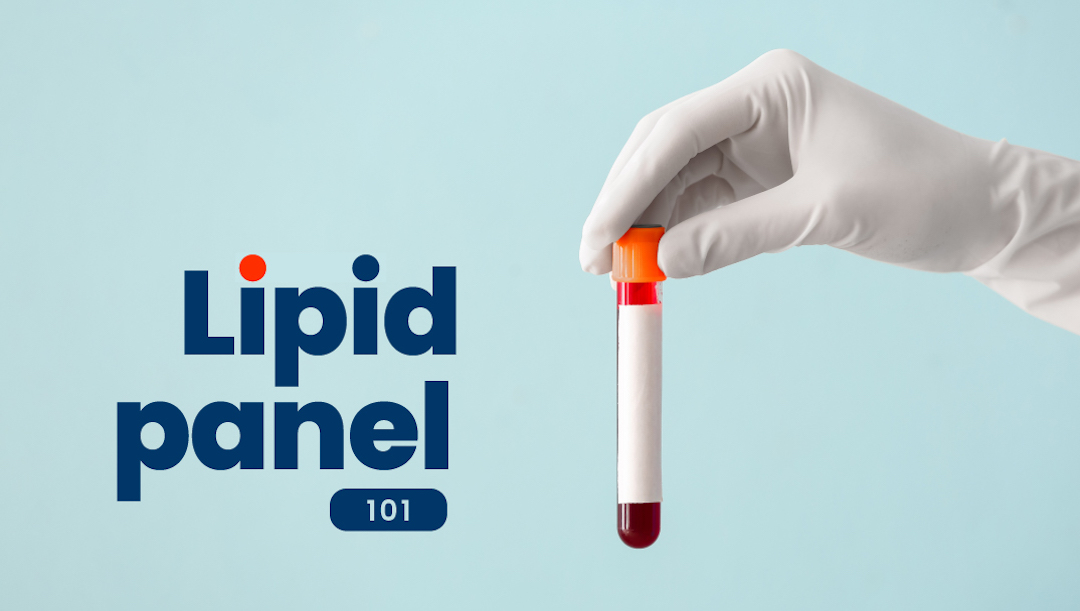 As the body’s organ that pumps blood throughout the body, to say the heart is important would be an understatement. It is vital to life, both for our literal ability to live and our quality of life.
As the body’s organ that pumps blood throughout the body, to say the heart is important would be an understatement. It is vital to life, both for our literal ability to live and our quality of life.
Despite this, it’s all too easy to neglect our cardiovascular health. Most of us are aware of the importance of exercise and a healthy diet in supporting our heart, but there’s another area of heart health maintenance that doesn’t get as much attention: blood tests.
Blood tests are useful because they can tell us so much about what’s going on inside our bodies. In fact, without routine blood work, we can’t really know where our overall health stands. With blood work, though, we gain insights on exactly what we need to focus on, even if it’s just reassurance that for now, everything is going great.
Lipid panel 101
One of the best blood tests to measure your heart health is the lipid panel. A lipid panel measures your cholesterol and triglyceride levels. It typically includes four components:
- Total cholesterol: This measures the total amount of cholesterol in your blood, including both “good” and “bad” cholesterol levels.
- LDL cholesterol, aka, the “bad” cholesterol. High levels of LDL cholesterol can contribute to the buildup of plaque in the arteries.
- HDL cholesterol, aka, the “good” cholesterol. HDL cholesterol plays a protective role in the body. It helps remove as much as 1/3 of the LDL cholesterol away from the arteries and back to the liver to be processed and eliminated from the body.
- Triglycerides. Triglycerides are a type of fat found in the blood. Elevated triglyceride levels are associated with an increased risk of cardiovascular disease.
You will get a number for each of the four categories. In general, here is what is considered normal for each:
- Total cholesterol
- Normal range: Below 200 mg/dL
- LDL cholesterol (the “bad” cholesterol)
- Normal range: Below 100 mg/dL
- HDL cholesterol (the “good” cholesterol)
- Normal range: Above 60 mg/dL
- Triglycerides
- Normal range: Below 150 mg/dL
Remember, cholesterol and triglycerides are needed as part of normal metabolic processes in the body, but it is very important to keep these levels in check. If your results are outside the normal range on any of these, you may be at increased risk for cardiovascular disease. Your doctor will explain your results and recommend a personalized plan for moving forward.
Calculating your TG:HDL ratio
Another useful number to keep track of is your TG:HDL ratio. This ratio compares the level of triglycerides to HDL cholesterol in your blood. A high TG:HDL ratio suggests an imbalance in lipid metabolism and indicates an increased risk of heart disease and other metabolic disorders.
To calculate your TG:HDL ratio, simply divide your triglyceride level by your HDL cholesterol level. For example, if your triglyceride level is 120 mg/dL and your HDL is 40 mg/dL, your ratio would be 3:1. As you’ll see below, the lower your ratio, the better.
- Optimal: 3.5:1 or less
- Normal: 3.5:1–5:1
- High risk: 5:1 or higher
Why the TG:HDL ratio is important
HDL, LDL, and triglyceride levels have long been used to measure overall heart health, but many doctors consider the TG:HDL ratio to be a better predictor of your risk of developing metabolic syndrome, cardiovascular diseases, diabetes, and insulin resistance.
Insulin resistance occurs when cells stop responding to insulin the way they should, which usually begins after the body’s blood glucose has been consistently elevated for a long time. Since insulin resistance is the driver behind many modern lifestyle diseases, it’s important to understand how our bodies process insulin so we can make changes as needed.
The TG:HDL ratio is a useful measurement to help us monitor insulin resistance because it compares the relationship between triglyceride levels (which tends to be higher in insulin-resistant individuals) and levels of HDL cholesterol (which tends to be lower). A higher TG:HDL ratio suggests an increased risk for insulin resistance and related metabolic disorders.
Tips to improve your cholesterol and triglyceride levels
Many people are hesitant to learn the results of their blood work, but knowing these numbers gives us more control over our health by helping us know what decisions to make about our health moving forward. Lifestyle changes can have a powerful, long-lasting effect on our health. Which is good news, because lifestyle is largely within our control.
1. Eat a nutrient-rich diet. Focus on whole foods, including fruits, vegetables, whole grains, lean proteins, and healthy fats. Limit your intake of ultra-processed foods.
2. Exercise regularly. Regular exercise can help increase HDL cholesterol and lower triglyceride levels. Aim for at least 150 minutes of moderate-intensity exercise each week.
3. Maintain a healthy weight. Excess weight, particularly belly fat, could put you at higher risk for insulin resistance and type 2 diabetes. Do what you can, starting with diet and exercise, to keep your weight at a healthy level.
4. Drink less. Excessive alcohol intake can raise triglyceride levels and contribute to liver damage, so cap the drinks at one a day, or save them for special occasions.
5. Don’t smoke. Smoking damages blood vessels and lowers HDL cholesterol. If you smoke, quitting is the best thing you can do for your heart health.
6. Sleep 7–9 hours a night. Sleep should be a priority, not something you get around to “when you have the time.” Adequate sleep helps regulate both appetite and insulin sensitivity, which support overall metabolic health.
Your doctor will be able to help you come up with a personalized plan to improve your blood numbers, but these tips provide some good general guidelines for anyone wanting to improve their cholesterol, triglyceride, and insulin levels.